What is the Employee Competency Framework?
An Employee Competency Framework is a structured approach to identifying and assessing the skills, knowledge, and behaviors that employees need to perform their roles effectively. It helps organizations define the key competencies required for each job position and provides a framework for evaluating employee performance and development. The framework typically includes a set of core competencies that are relevant to all employees and additional competencies that are specific to different job roles or levels within the organization. By using an Employee Competency Framework, organizations can align their talent management strategies with business goals, improve recruitment and selection processes, and support employee development and career planning.
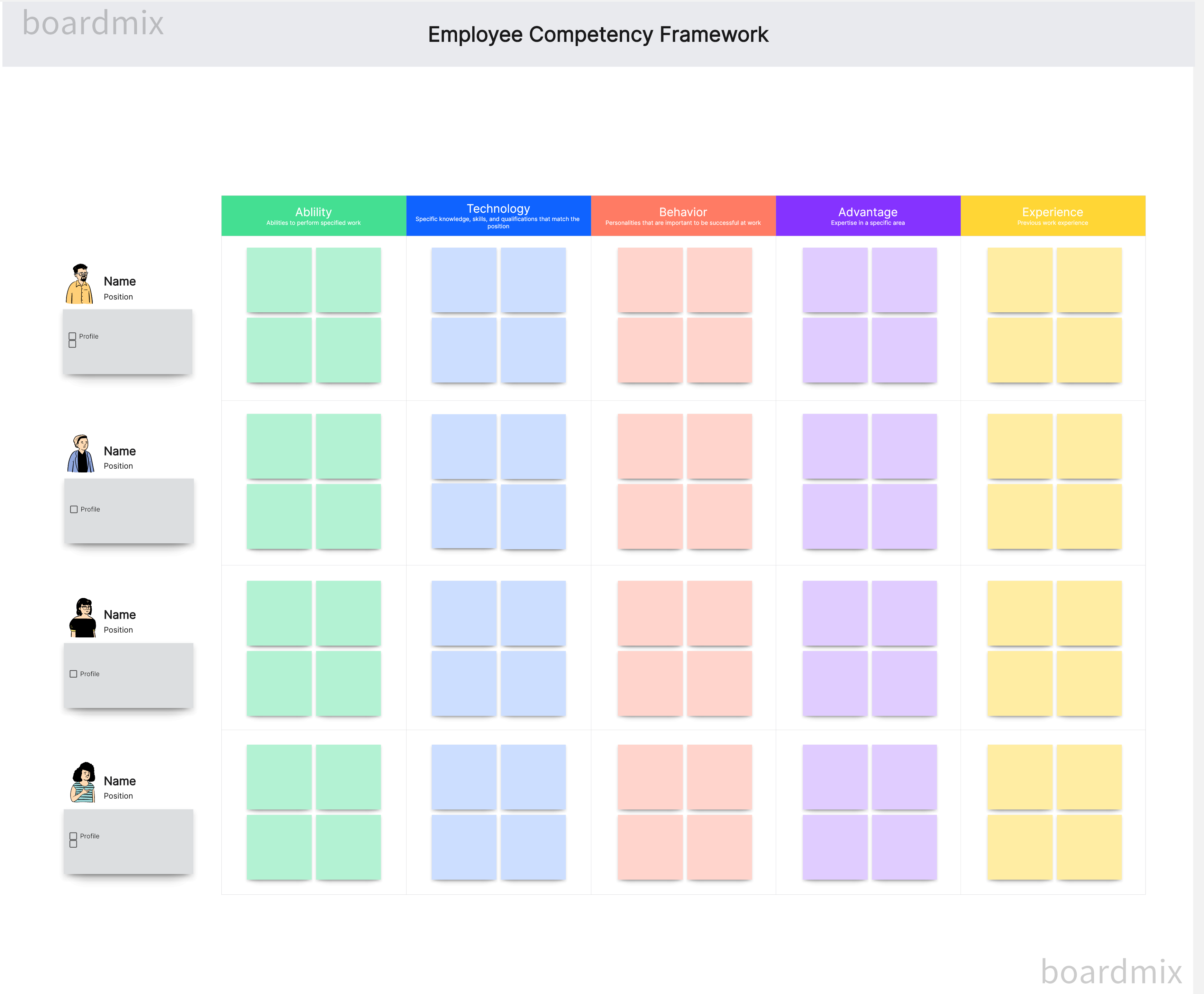
Why is Employee Competency Framework Important in Employee Development
The value of the employee competency model in employee development is mainly reflected in the following aspects.
1. Clear competency requirements
The competency model lists in detail the key skills, knowledge, and behaviors required for each position, so that employees clearly understand their job requirements. This helps them clarify personal development goals and focus on improving important skills and abilities.
2. Accurate development guidance
The competency model provides a clear path for employee development. By clarifying the competency requirements at each stage, employees can clarify their learning plans and systematically improve their abilities.
3. Fair evaluation standards
The competency model provides fair and objective standards for employee performance evaluation. By comparing the actual performance of employees with the standards in the model, it can fairly evaluate employee performance, recognize excellent employees, and provide feedback on areas that need improvement.
4. Effective talent management
By using the competency model, organizations can manage talents more effectively. For recruitment, the competency model can help organizations clearly define job requirements and attract and select suitable talents. For training and development, the competency model can guide organizations to design and implement effective training plans.
5. Improve organizational performance
Finally, when employees continue to learn develop, and improve their abilities, they will be able to complete work tasks better, thereby improving the overall performance of the organization. At the same time, improving employee capabilities and satisfaction, also helps to increase employee job satisfaction and retention rate.
Therefore, the employee competency model plays an important role in promoting employee development and improving organizational performance.
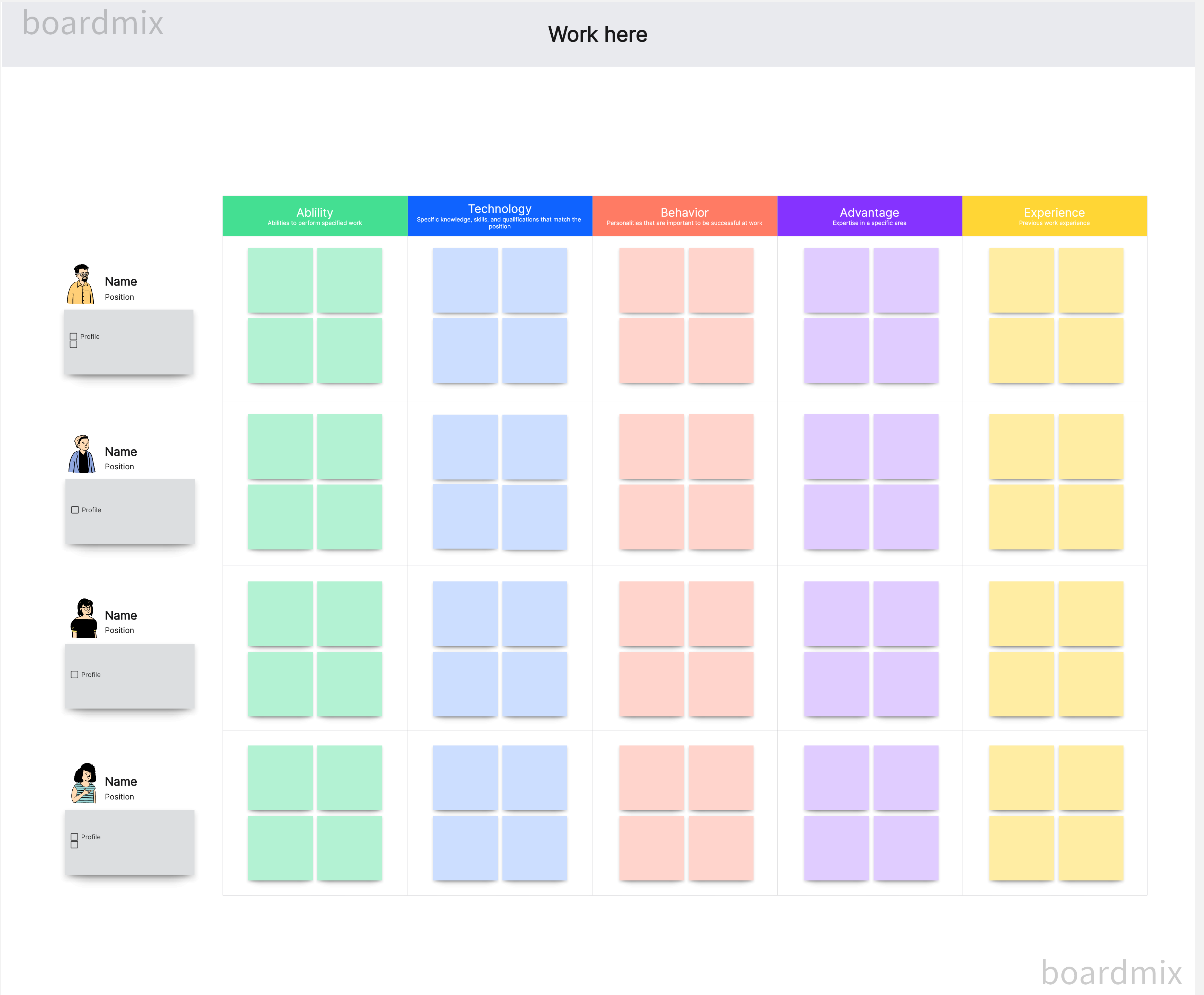
What are the Benefits of the Employee Competency Framework
The employee competency framework is a systematic method used to determine and define the key skills, knowledge, and behaviors for success in an organization. Here are some main benefits of using an employee competency framework.
Clear Performance Standards
The competency framework provides employees and managers with a clear, objective performance standard that can clearly explain which behaviors and results are considered excellent, qualified or need improvement. This can eliminate subjectivity and bias in the evaluation process, making performance management more fair and effective.
Targeted Development and Training
By identifying key skills and abilities, the competency framework can help design targeted development and training plans. This approach can improve the return on investment in training by increasing organizational performance through enhancing employees' key skills.
Effective Recruitment and Selection
The competency framework can also be applied to the recruitment and selection process to determine whether candidates have the key skills and abilities needed to complete tasks. This can improve recruitment effectiveness, ensuring that new employees meet organizational needs.
Clear Career Development Path
The competency framework can depict a clear career development path, allowing employees to understand the skills and knowledge needed to reach the next level or acquire new roles. This can increase job satisfaction among employees, enhancing their loyalty to the organization.
Support Strategic Planning
Finally, the competency framework can be combined with the strategic planning of an organization to determine key skills and abilities needed in the future. This is particularly important for talent management and planning, to ensure continued success of the organization in the future.
Overall, the employee competency framework provides a clear & consistent reference standard for various human resource activities within an organization thereby enhancing its efficiency & effectiveness.
Examples of Employee Competency Framework for Employee Development
Here is a specific example of an employee competency framework for employee development:
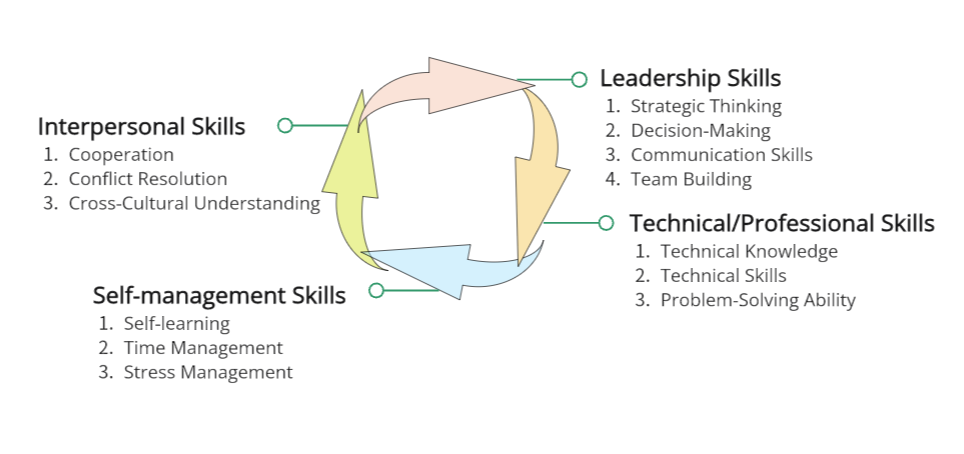
1. Leadership Skills
This area covers various skills and behaviors that employees need to become effective leaders, including:
Strategic Thinking: Ability to understand the organization's overall direction, develop and implement strategic plans
Decision-Making: Making wise decisions under uncertainty
Communication Skills: Ability to clearly and effectively convey information, listen to and understand others' views
Team Building: Know how to build and manage efficient teams
2. Technical/Professional Skills
This area focuses on the professional knowledge and skills that employees need to complete their work tasks. For example:
Technical Knowledge: Understand and master professional knowledge related to work
Technical Skills: Proficient in using tools and equipment related to work
Problem-Solving Ability: Use technical and professional knowledge to solve complex problems
3. Interpersonal Skills
This area includes the skills that employees need to interact effectively with others, such as:
Cooperation: Willingness to cooperate with others to achieve common goals
Conflict Resolution: Ability to understand and handle conflicts between individuals and teams
Cross-Cultural Understanding: Respect for multiculturalism, ability to work in different cultural backgrounds
4. Self-management Skills
This area emphasizes the management of self-development and work attitude by employees, such as:
Self-learning: Willingness and ability for lifelong learning
Time Management: Effectively arrange and use time
Stress Management: Stay calm under pressure, effectively handle stress
The above are just some basic areas of the employee competency framework for employee development. Each organization may adjust or expand this framework according to its specific situation.
How to Develop an Effective Employee Competency Framework
Creating an effective employee competency framework is a strategic process that requires careful planning and implementation. Here are some steps to guide you through the process:
1. Identify Key Roles
Start by identifying key roles within your organization. These roles should be critical to achieving your business goals.
2. Define Required Competencies
For each role, define the competencies required for success. These may include skills, knowledge, behaviors, or other attributes.
3. Develop Behavioral Indicators
For each competency, develop behavioral indicators that can be used to measure performance. These indicators should be specific, observable behaviors that demonstrate competency.
4. Validate the Framework
Validate the framework with stakeholders to ensure it accurately reflects job requirements and organizational values.
5. Implement the Framework
Implement the framework in your HR processes such as recruitment, training and development, performance management, etc.
6. Monitor and Update
Regularly monitor and update the framework to ensure it remains relevant as job roles and business needs evolve.
Remember, developing an effective employee competency framework is not a one-time task but a continuous process of improvement.
Boardmix: Create Employee Competency Framework Online with Template
Boardmix is an online platform that provides powerful tools and resources for creating and managing employee competency frameworks. Here are the steps on how to use templates to create an employee competency framework online in Boardmix.

1. Register and Log in to Boardmix
First, you need to visit the Boardmix website and register for an account. After completing the registration, log in with your username and password.

2. Access Competency Framework Template
After logging in, select "Templates" from the left menu bar, then enter "competency model" into the search box. Alternatively, on the Home page, choose Add Whiteboard, which will also take you to a page containing various competency framework templates.
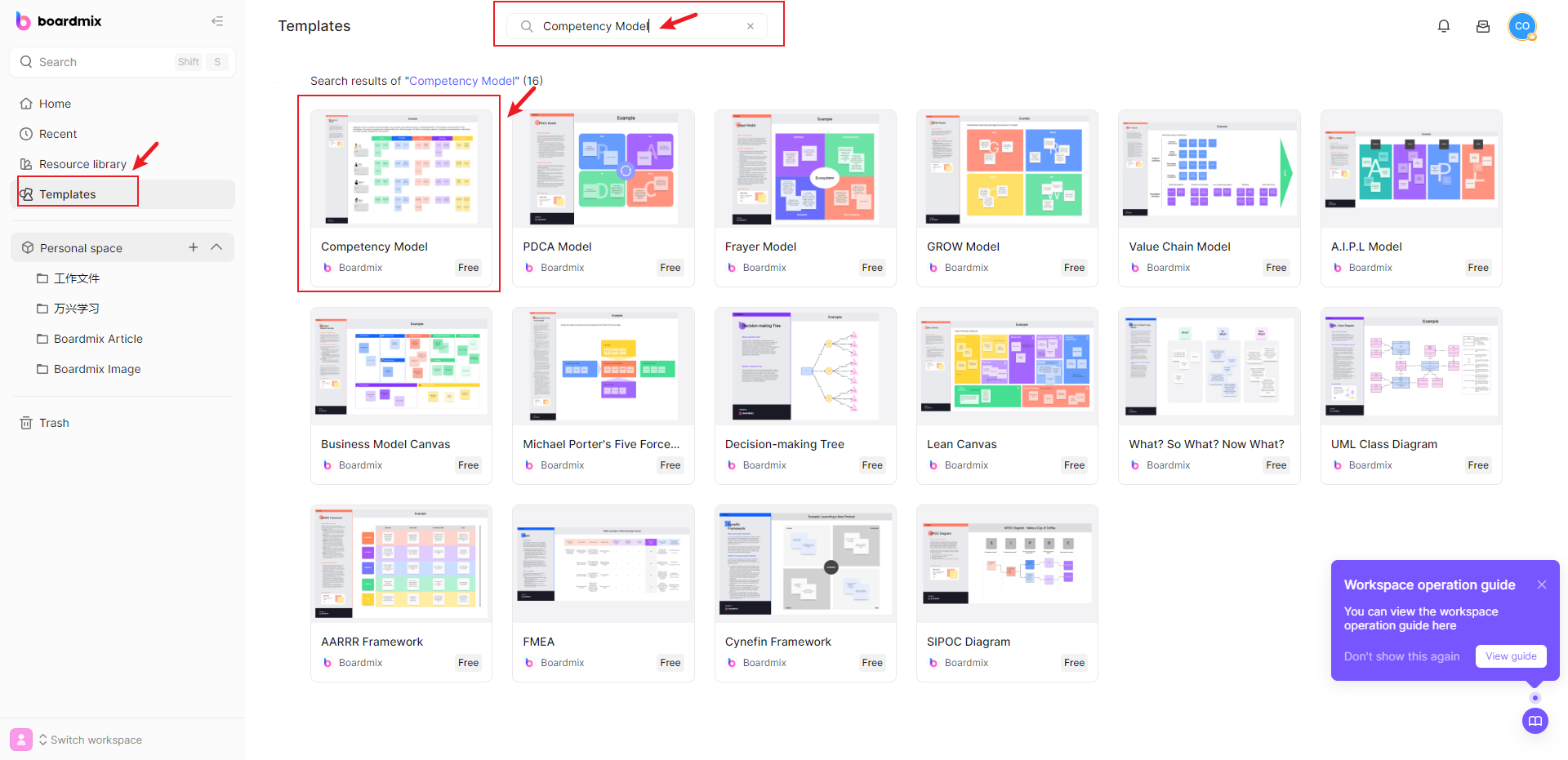
3. Customize Template
Once you've selected a template, you can start customizing it to suit your needs. In the template, you can edit descriptions of various competencies and behaviors as well as their scoring criteria. You can also add new competencies or delete unnecessary ones.

4. Save and Share
After customizing, remember to save your work. Then, you can choose to publish and share this framework so that your employees and colleagues can see and use it.
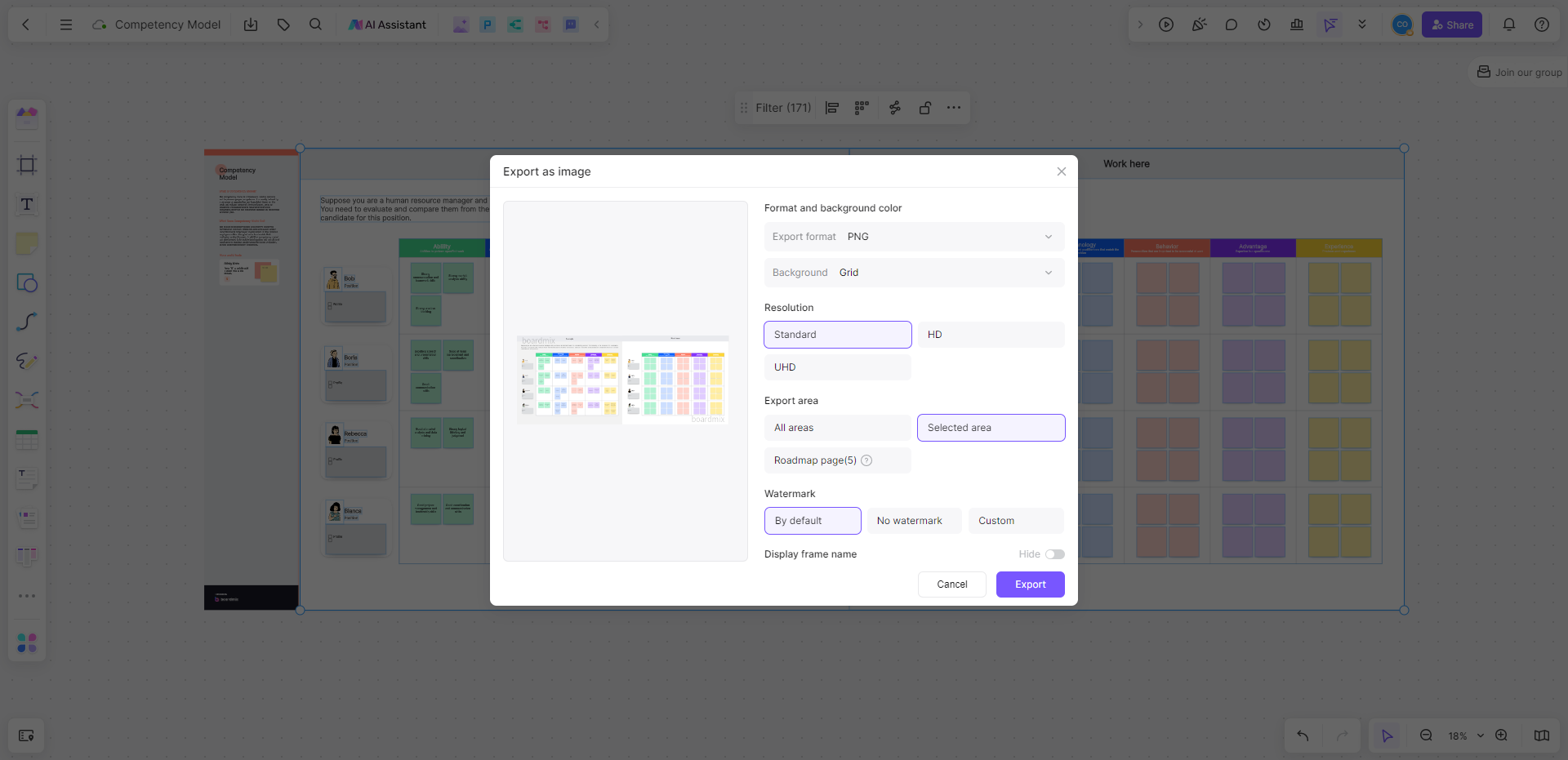
By using this Boardmix competency framework template, you can save a lot of time and avoid the hassle of creating a competency framework from scratch. Meanwhile, other tools and resources provided by Boardmix can also help you manage employee development and performance more effectively.








